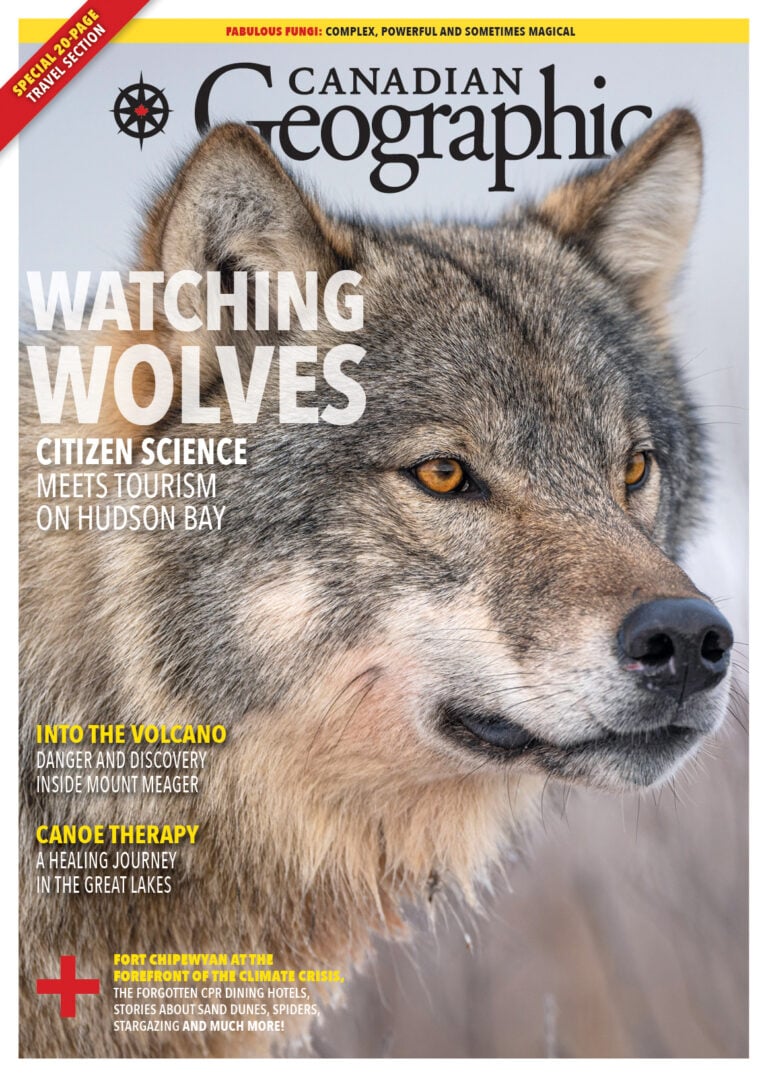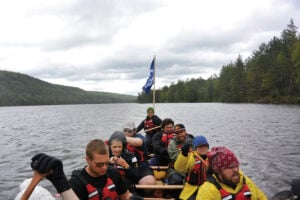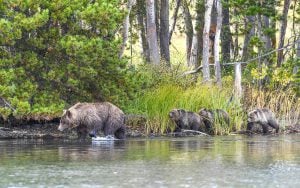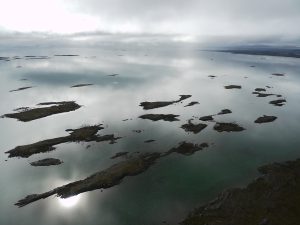
Wildlife
Do not disturb: Practicing ethical wildlife photography
Wildlife photographers on the thrill of the chase — and the importance of setting ethical guidelines
- 2849 words
- 12 minutes
People & Culture
Through photographs and interviews, Canadian photographer Sara Hylton explores how human-caused impacts are damaging Fort Chipewyan, a small community in northern Alberta
Fort Chipewyan is a community born of the water. On the northwest shore of Lake Athabasca in Alberta’s far north, people have long subsisted off the lake and its tributaries by fishing, hunting, trapping and gathering medicine. But for decades, the tiny community — including the Mikisew Cree First Nation, Athabasca Chipewyan First Nation, Fort Chipewyan Métis and settlers — have found themselves at the forefront of the climate crisis. They’ve watched as warmer winters have eaten away at their ice road, the only road into the community; as increasingly frequent and intense wildfires have engulfed their town in smoke — this year, the town was evacuated for three weeks; as their water has receded and the health of their people and wildlife has declined. The ravages are human caused: climate change, the damming of parts of the watershed and, perhaps most damaging of all, Fort Chip’s location downstream from the Alberta oilsands. Studies have found high levels of contaminants in the waterways and in the fish and animals people eat. These contaminants have been linked to high rates of rare cancers. In February, Fort Chip residents learned that, nine months before, wastewater containing arsenic, hydrocarbons, sulfates and sulfides had flowed into the watershed and nearby land from an Imperial Oil tailings pond at its Kearl Lake project outside of Fort McMurray. By the time the leak came to light, community members had been consuming food harvested from the region for months. Here, Elders and residents tell the story of Fort Chip’s water in their own words.
The water here is our highway. I know the delta; I know its every bend and who’s there and what’s there. The water is like everyone else in this community. Water is life. Water is the boss. We respect the water. When we go out on the water, we pay a tribute to the water. Put a handful of tobacco in the water, or anything, you know, just ask the grandfathers to help us. Give us a safe journey.
In the late ’60s, the Bennett hydro-electric dam was being built on the Peace River in northern B.C. I remember my Uncle Fred, who was the chief at that time, said that the B.C. and federal governments said our delta would not be affected. But almost immediately, when the Bennett dam started filling up their reservoir, our delta started to dry out. And no water means no muskrats.
Since the 1970s, we’ve lived downstream from the oilsands industry, and Lake Athabasca is their toilet bowl. I worry about the medicines I pick from the water. The industry has us in a corner. As Indigenous Dene people, for us to try to fight them, we would just lose out. And so, we have to compromise and come to [an agreement] where they’re willing to help us. It’s a very degrading feeling.
My grandparents, my mom, my dad, my grandma [all] told me that I was put here by the Creator to look after Mother Earth for our grandchildren and those yet to come. And that’s why I don’t work at Syncrude. I don’t need to; I’m comfortable. I’m not rich, but I’m rich in history. I’m rich with grandchildren.
— Alice Rigney, Elder, Athabasca Chipewyan First Nation
‘The water is like everyone else in this community. Water is life. Water is the boss. We respect the water. When we go out on the water, we pay
a tribute to the water.’
I grew up in Fort Chipewyan, but I lived mostly in the bush in Big Point, 20 miles east, with my grandparents. I fished on Lake Athabasca, and I trapped with my grandfather.
The government said the fishing industry in Fort Chipewyan was not sustainable. They told us, “you’re not going to be able to fish the way that you have for centuries. You’re not going to be able to provide for your family the way you want to.”
Some people in Fort Chip look at the oil industry, like, “they’re giving us money and they’re taking care of our community.” And then others, the real proud Métis and Mikisew and Chipewyan band people that want to provide for themselves, don’t want nothing from the industry. And those are the people that are really, really affected.
— Kendrick Cardinal, President Fort Chipewyan Métis Nation
I used to be on town council. The reason why there’s a swimming pool now in Fort Chip is that we were told the sediment in the lake is too polluted to swim here. It’s okay when it’s not disturbed, but you tell me what child doesn’t disturb the water when they go into a lake.
— David Blair Fort Chipewyan resident
I worked at the water treatment plant for 28 years. I drink the tap water all the time. If I smell the chlorine in it, it’s good enough. I had colon cancer in 1995. I blame it on having to mix up the powdered chlorine at the plant, inhaling it. Because before I even knew I had cancer, I could taste chlorine in my mouth.
— The late Fred “Jumbo” Fraser, Former president, Fort Chipewyan Métis Nation
I worked at Syncrude for 34 years, so I know what they put in the tailings ponds. It still surprises me now, being Chief; they should never be allowed to put anything in the water. But that’s what happened.
I moved back to Fort Chip when I became Chief. So now I’m on the other side of the table. And when oil companies turn around and say that they’re going to release these tailings with the effluent, I go, “No, you’re not.” We have to continue water monitoring; it’s very important that we monitor to see what changes.
— The late Chief Peter Powder Former Chief of the Mikisew Cree First Nation
‘So, while we’re not going to blame everything on industry, we do live in a land that we want to respect. We want to share our knowledge in hopes that it’ll be just as beneficial for us as it is for the other person.’
When I was a kid, the water lines here in Lake Athabasca were much higher. We used to swim this water, and now we can’t. In the early 2000s, David Schindler came from the University of Alberta and did tests and found chemicals in the water; some of them are natural and some of them are from the oilsands. I mean, everybody says that, and everybody knows it. So, while we’re not going to blame everything on industry, we do live in a land that we want to respect. We want to share our knowledge in hopes that it’ll be just as beneficial for us as it is for the other person.
— Blue Eyes Simpson Vice President of Fort Chipewyan Métis Nation and area manager for Parks Canada
This photo essay, undertaken in 2021, is part of a multimedia project supported by a grant from the Trebek Initiative. trebekinitiative.com













This story is from the September/October 2023 Issue

Wildlife
Wildlife photographers on the thrill of the chase — and the importance of setting ethical guidelines

People & Culture
How a journey through the Great Lakes helped reshape my relationship with water after the loss of my father

People & Culture
These 10 members of Canadian Geographic’s online Photo Club are making waves with their unique perspectives on Canadian wildlife and landscapes

Environment
How much do you know about Canada’s water — where it comes from and how it’s used?